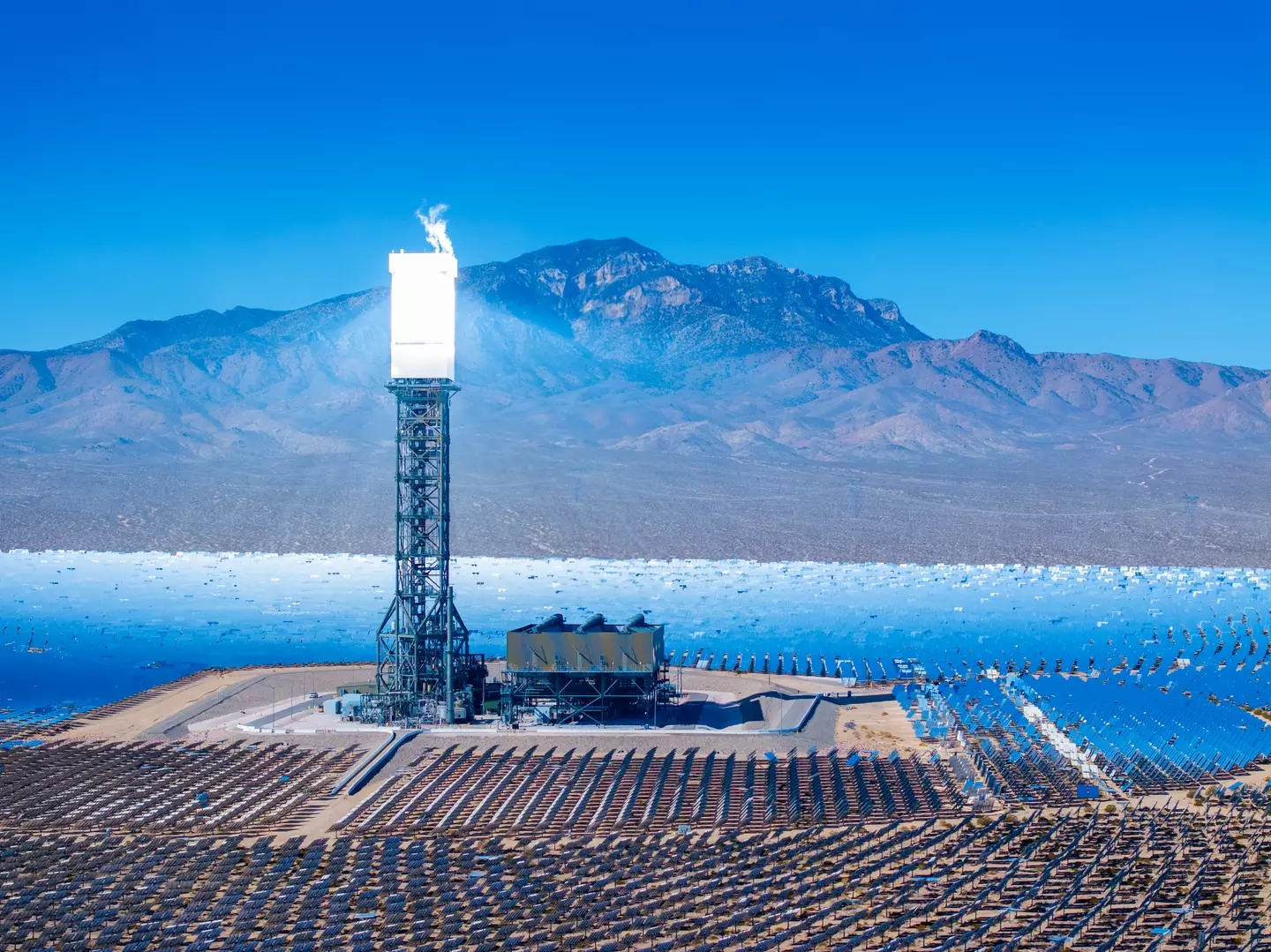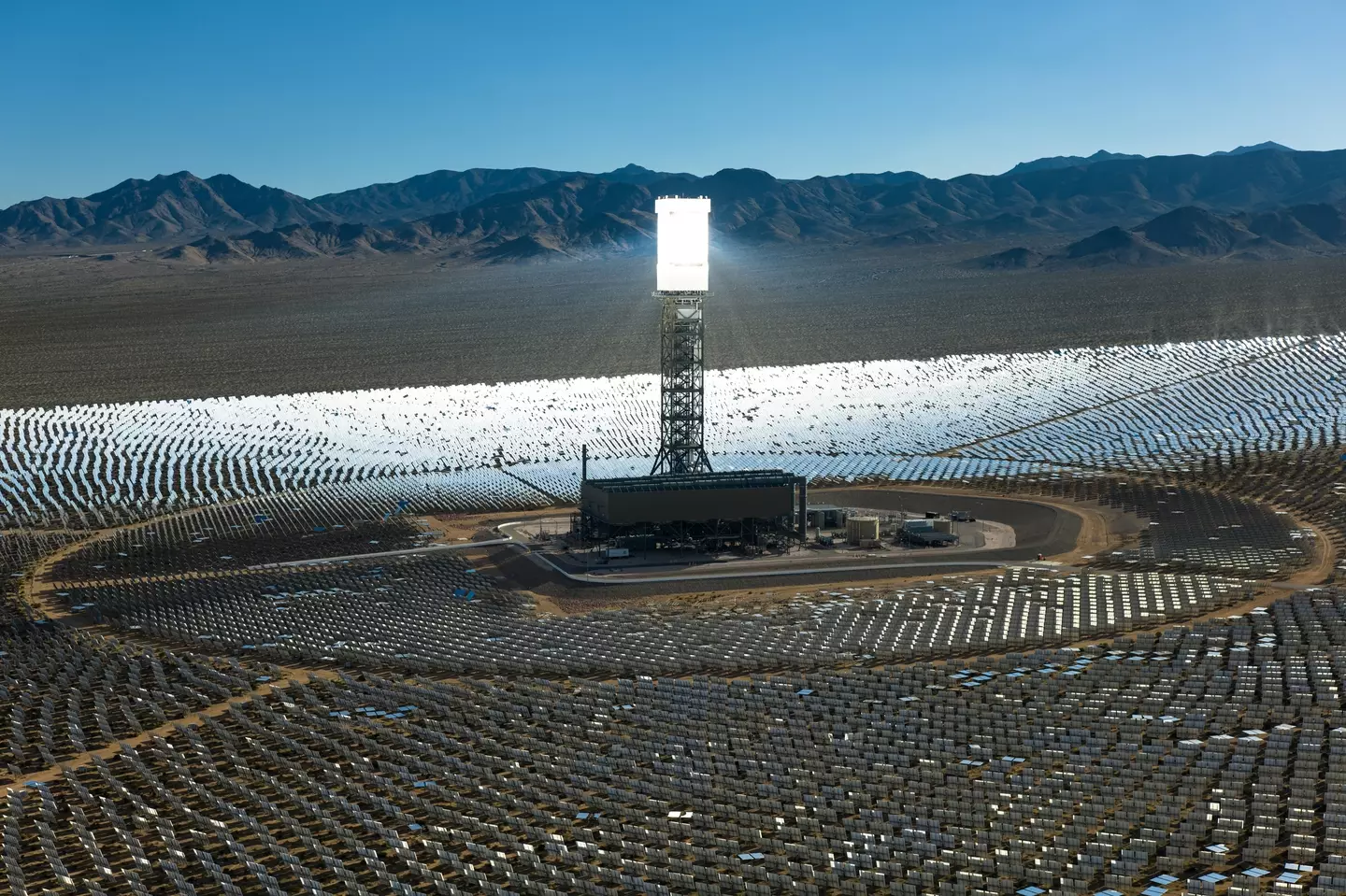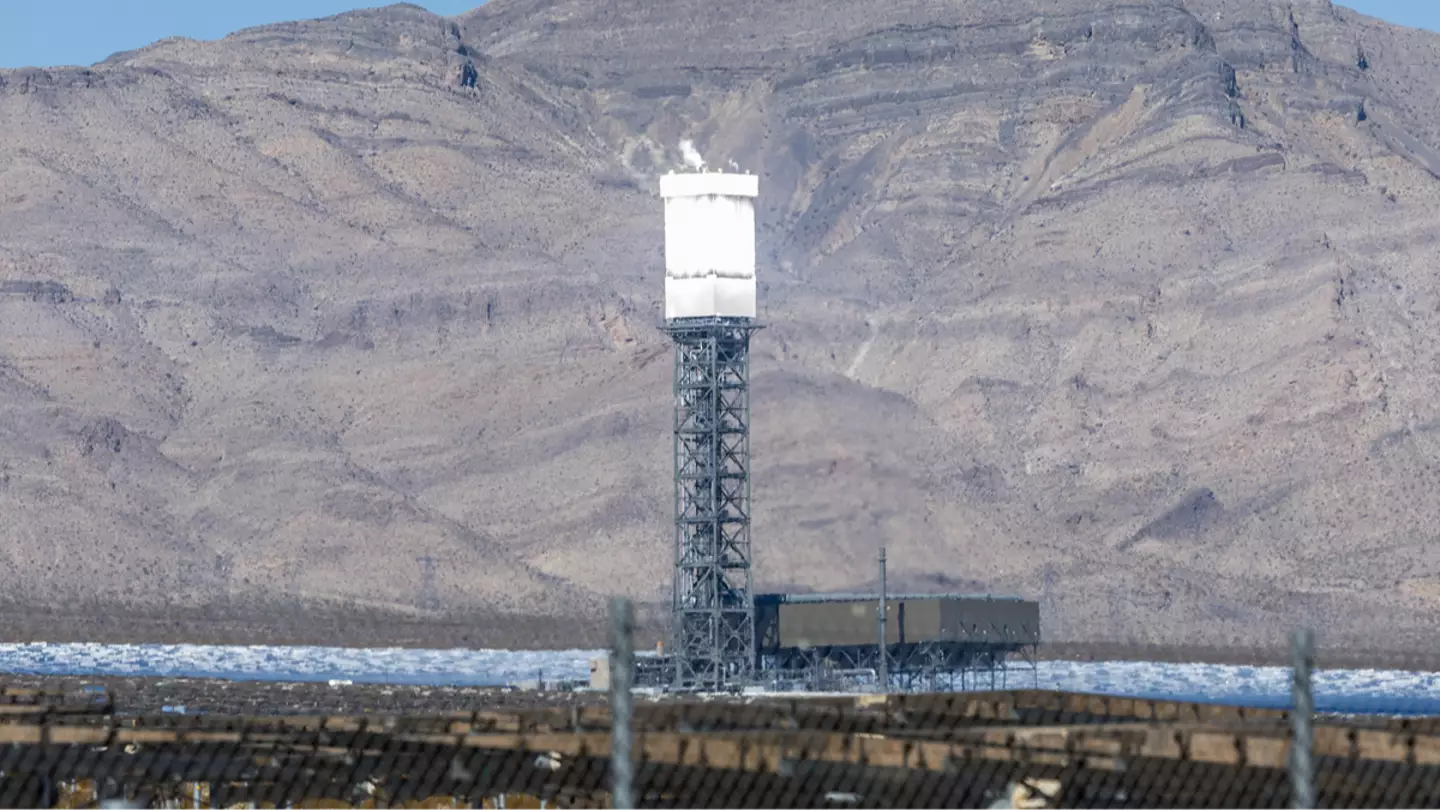The closure of a $2 billion solar farm in California’s desert has been explained, as officials have decided to cease operations on the ambitious project.
In 2014, $2.2 billion was invested in the Ivanpah Solar Power Facility located in California’s Mojave Desert, with high expectations for its energy production capabilities.
The facility boasts three 459-foot towers and approximately 174,000 computer-controlled mirrors known as heliostats, designed to capture sunlight and convert it into electricity.
Construction for this massive project commenced in 2010 and was completed by 2014. However, the solar farm is now set to shut down in 2026, 13 years ahead of the original schedule.
This decision has sparked dissatisfaction among some stakeholders.

The main issue was that Ivanpah never generated the amount of energy it was supposed to, making it unsustainable for continued operation. Surprisingly, the solar farm also depended on natural gas to function, which contradicted its original purpose.
“Ivanpah stands as a testament to the waste and inefficiency of government subsidized energy schemes,” Jason Isaac, CEO of the American Energy Institute, expressed to Fox News. “It never lived up to its promises, producing less electricity than expected, while relying on natural gas to stay operational.”
NRG Energy Inc., the owners of Ivanpah, announced earlier this year that despite the upcoming closure, the project was considered a success.
However, it struggled to compete with other environmental technologies, such as rooftop solar panels, due to higher operational costs.
“The prices were competitive but advancements over time in photovoltaics and battery storage have led to more efficient, cost effective and flexible options for producing reliable clean energy,” NRG noted.

Some environmentalists are actually relieved about the solar farm’s impending closure. Julia Dowell from Sierra Club shared with the Independent: “The Ivanpah plant was a financial boondoggle and environmental disaster. Along with killing thousands of birds and tortoises, the project’s construction destroyed irreplaceable pristine desert habitat along with numerous rare plant species. While the Sierra Club strongly supports innovative clean energy solutions and recognizes the urgent need to transition away from fossil fuels, Ivanpah demonstrated that not all renewable technologies are created equal.”
Once the world’s largest solar plant and a symbol of California’s renewable energy aspirations, Ivanpah’s promise has unfortunately diminished since its completion in 2014.
The solar farm is situated near the California-Nevada border, approximately a 50-minute drive southwest of Las Vegas.

